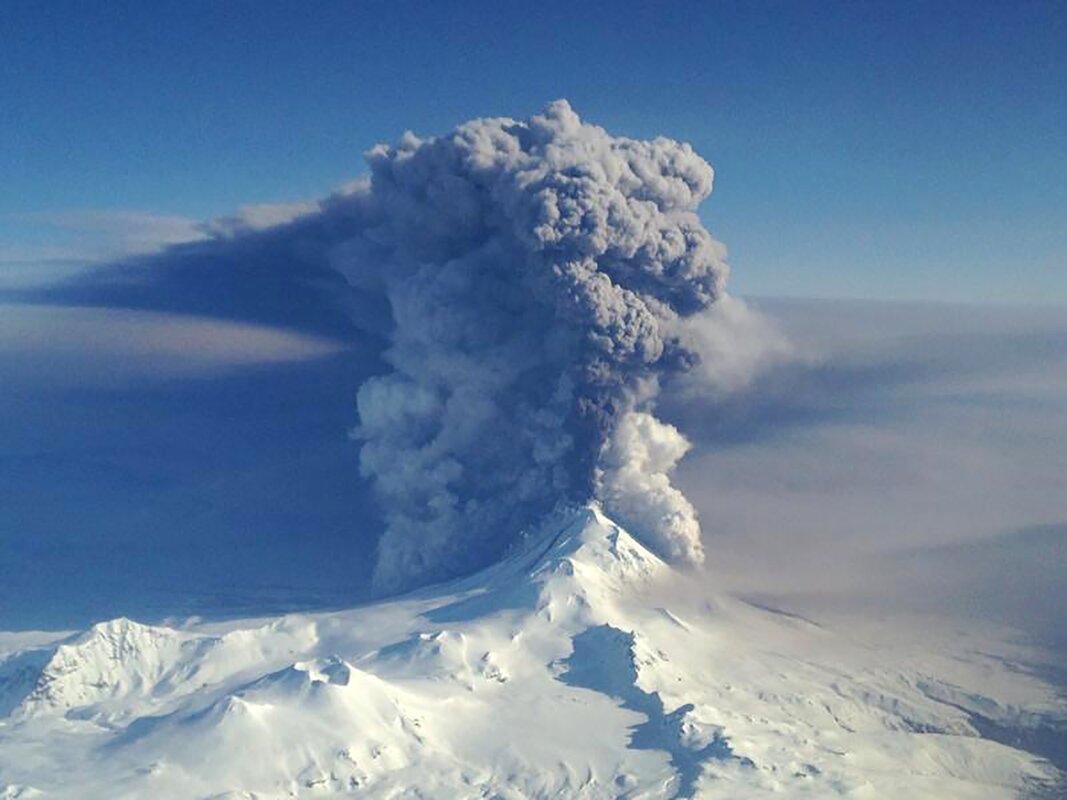US has 169 active volcanoes, but scientists aren't worried
Loading...
Alaska’s most active volcano, Pavlof, erupted Sunday afternoon, spewing ash 20,000 feet up in the air and still disrupting air traffic days later.
And while volcanic eruptions like Pavlof's might be a familiar experience to Americans living near Mount St. Helens in Washington, Kilauea in Hawaii, or Alaska’s Aleutian Islands (where Pavlof and numerous other volcanoes are located), the rest of the continental US may be surprised to learn that the United States holds 169 active volcanoes.
“The area of North America is known to geologists (and others) as the Basin & Range is ,” wrote Erik Klemetti, an assistant professor of Geosciences at Denison University, in Wired.
Of the world’s 1,500 active volcanoes in the world – excluding those located on the ocean floor – the United States makes up 11 percent. But sheer quantity of volcanoes does not equal risk.
According to the Global Volcano Model, a UK-led international network of institutions working with the International Association of Volcanology and Chemistry of the Earth’s Interior, is concentrated in five countries.
Indonesians face 66 percent of this risk, followed by residents of the Philippines, Japan, Mexico, and Ethiopia.
Yes, the US has many volcanoes, but most haven’t erupted for thousands of years. And the ones that have erupted in recent history are continuously monitored by the US Geological Survey (USGS).
"Volcanic threat is defined as ," says the USGS. It looks at both the "volcanic hazards" – the destructive power of the volcano – and the "exposure" of people and property.
Since most volcanoes are in sparsely populated areas, their volcanic hazard might be high but their exposure is low.
About 100 of the 169 active US volcanoes , followed by California, Oregon, and the Northern Mariana Islands with 18, 16 and 13 active volcanoes respectively.
Hawaii’s six volcanoes and Washington’s seven volcanoes are some of the country’s most active, so despite their low numbers, their "volcanic threat" is fairly high.
Arizona, Colorado, Idaho, Nevada, New Mexico, Utah, and Wyoming each have fewer than five volcanoes.
After accounting for a volcano’s hazard and exposure scores, the USGS generates an overall threat score. US volcanoes classified as the “highest priority,” requiring the most extensive monitoring coverage, comprise only : 16 in Alaska, 7 in the Northern Mariana Islands, four in both Washington and Oregon.
“Just because a volcano ranks as hazardous ,” Nature’s Alexandra Witze reported last year. “If a volcano has enough scientific monitoring equipment on it, and a well-organized local response, then the risk to human life can be reduced.”
The eruption of Mount St. Helens in 1980 was the deadliest eruption in US history, killing 57 people.
Alaska's Pavlof has had , including a number of small eruptions within the past 20 years.
Hasaii's Kilauea is one of the world’s most active volcanoes, .





